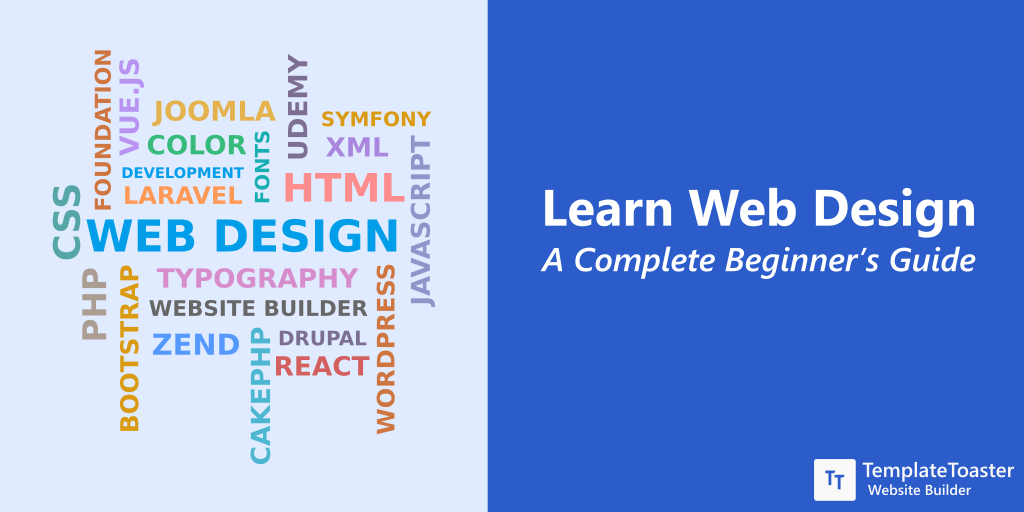Discovering the Basic Concepts and Best Practices of Efficient Web Design for Boosted Individual Experience and Engagement

Significance of User-Centered Layout
User-centered layout (UCD) functions as a keystone of effective internet layout, emphasizing the need of customizing electronic experiences to meet the requirements and preferences of individuals. By focusing on the individual's viewpoint, UCD makes certain that internet sites are not only useful however additionally user-friendly and engaging.
The importance of UCD exists in its ability to boost user fulfillment and retention. They are extra most likely to return and suggest it to others when customers find a website easy to navigate and aligned with their expectations. This method fosters a deeper psychological link, making it possible for brands to construct trust and commitment amongst their target market.
Furthermore, UCD facilitates the identification of individual discomfort points via research study and testing, allowing designers to attend to these issues proactively. By entailing users in the design process, whether through interviews, studies, or use screening, designers acquire important insights that notify much better decision-making.
Inevitably, the application of UCD not just boosts the total individual experience but likewise drives quantifiable service results. Sites that welcome user-centered methods tend to see higher conversion prices and boosted efficiency metrics, emphasizing the critical duty of UCD in modern internet design.
Secret Design Concepts
Effective internet layout is based in crucial style concepts that improve functionality and visual charm, more building on the structure developed by user-centered design. These principles consist of uniformity, visual hierarchy, and feedback, which with each other develop an instinctive customer experience.
This familiarity helps users understand the interface and navigate with simplicity, enhancing brand name identity. Aesthetic pecking order, accomplished with positioning, size, and shade, overviews individuals' attention to the most vital content, making info extra engaging and accessible.

Incorporating these vital layout principles promotes a harmonious mix of performance and aesthetic appeals, ultimately bring about enhanced customer contentment and involvement. By adhering to these fundamental ideas, designers can produce websites that not only look appealing yet likewise provide a effective and delightful user experience.
Finest Practices for Functionality
Usability is a cornerstone of effective web layout, including a series of methods that improve the total experience for customers. To achieve optimal usability, it is vital to prioritize instinctive navigating. Logical pathways and clear menus permit individuals to discover information swiftly, reducing aggravation and increasing fulfillment.
Furthermore, using constant style elements, such as color design and typography, cultivates experience and alleviates navigation. Individuals should not need to relearn exactly how to connect with various sections of the website. In addition, making certain that your website is receptive throughout different devices is vital, as an increasing variety of customers access content on mobile devices.
An additional best method includes incorporating ease of access attributes, such as alt message for photos and key-board navigation options, to accommodate customers with varied demands. Checking use through user feedback is important, as real-world insights can disclose unforeseen concerns and areas for improvement.
Enhancing Aesthetic Hierarchy
A distinct site link visual power structure is critical for guiding users with a site, permitting them to promptly discern the importance of various components on a page. This can be achieved through the critical use of size, comparison, spacing, and color (web design Johannesburg). Larger components naturally attract focus initially, making headlines or crucial phone call to action a lot more noticeable
Color can additionally play a substantial role in establishing pecking order; for circumstances, using a bold shade for switches can assist them attract attention against an extra muted history. Additionally, contrast between message and history is vital for readability, making sure that customers can easily navigate material without stress.
Whitespace, or adverse room, is another essential element of aesthetic power structure. It provides breathing room around aspects, assisting to team relevant things and leading the user's eye from one section to another. By efficiently utilizing these style concepts, internet designers can produce a seamless individual experience that improves engagement and reduces cognitive load.
Ultimately, a thoughtfully created aesthetic power structure not just boosts use yet likewise promotes a much more intuitive interaction with the web site, resulting in higher fulfillment and retention rates among users.
Adaptive and responsive Design
Aesthetic power structure plays a significant duty in customer experience, and its effectiveness needs to prolong throughout numerous gadgets and display sizes. Adaptive and responsive style are 2 important strategies to achieving this goal. Receptive style uses liquid grids, adaptable photos, and media questions to adjust the layout and web content dynamically, guaranteeing that individuals appreciate a smooth experience no matter of the tool. This method enables a single codebase, simplifying upkeep and updates while enhancing consistency throughout systems.
In contrast, flexible layout makes use of distinctive layouts tailored to particular display sizes. By discovering the individual's tool and serving an enhanced format, adaptive layout can offer a much more personalized experience. This often needs several variations of the exact same content, which can make complex administration and boost growth time.
Both methods have their qualities, and the choice in between them relies on task requirements, target audience, and resource schedule. Inevitably, the objective is to develop an appealing, easy to use user interface that maintains aesthetic power structure and functionality throughout all systems. A well-implemented receptive or flexible style why not try these out not just boosts user experience but likewise urges higher interaction and retention rates, crucial for the success of any kind of web job.
Final Thought
In verdict, efficient website design depends upon the combination of user-centered concepts and ideal methods that boost total experience and interaction. By focusing on use via user-friendly navigating, visual hierarchy, and responsive formats, designers can produce platforms that deal with diverse individual demands. Additionally, the consolidation of access functions and consistent style components ensures a smooth interaction throughout tools. Highlighting user feedback and aesthetic considerations inevitably cultivates complete satisfaction, retention, and enhanced efficiency in the digital landscape.
In the quickly progressing digital landscape, understanding the basic principles and finest practices of reliable web layout is critical for fostering boosted individual experience and engagement - web design Johannesburg.Usability is a keystone of successful web style, incorporating a range of techniques that boost the total experience for individuals. By efficiently using these style principles, web designers can create a seamless individual experience that enhances involvement and minimizes cognitive lots
Receptive style uses liquid grids, versatile pictures, and media queries to readjust the design and material dynamically, making certain that customers enjoy a smooth experience regardless of the gadget. A well-implemented responsive or adaptive layout not just enhances user experience however likewise motivates greater engagement useful reference and retention prices, important for the success of any web task.
 Alicia Silverstone Then & Now!
Alicia Silverstone Then & Now! Brandy Then & Now!
Brandy Then & Now! Christina Ricci Then & Now!
Christina Ricci Then & Now! Tyra Banks Then & Now!
Tyra Banks Then & Now! Naomi Grossman Then & Now!
Naomi Grossman Then & Now!